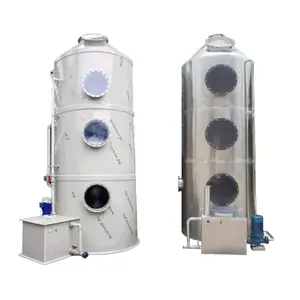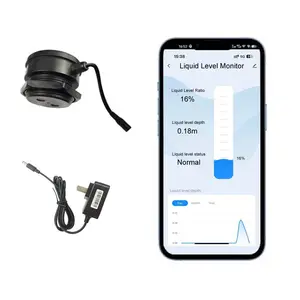Popular in your industry











































































Related Searches:







































































































































































About packed column for absorption
A packed column for absorption is a vital component in many industrial and chemical processes. It is also known as an absorption column packing or packed bed absorption column. This column is used in a wide range of applications that involve the separation of different components in a gas or liquid mixture. In simple terms, it is a vertical vessel filled with a packing material designed to facilitate the contact between two phases, often a gas and a liquid, for the purpose of mass transfer.
Types of Packed Columns for Absorption
The packed column absorber comes in various types, each suited for specific applications. Random packed columns use irregularly shaped packing materials, such as Raschig rings or Berl saddles, to create a random and tortuous path for the gas and liquid to interact. Structured packed columns, on the other hand, use specifically designed packing elements, such as corrugated sheets or gauze, to provide a more organized and controlled surface area for mass transfer. Another type is the plate column, which consists of a series of plates or trays that facilitate the contact between the gas and liquid phases as they flow across the plates.
Applications of Packed Columns for Absorption
The use of packed columns for absorption is widespread in various industries. In the chemical industry, they are employed in processes like the removal of impurities from gases or the separation of components in liquid mixtures. In the environmental sector, packed columns are utilized in gas treatment systems to remove pollutants before emission. The petroleum industry relies on these columns for refining and separating hydrocarbons. Additionally, packed columns play a crucial role in the pharmaceutical sector for processes like solvent recovery and purification.
Working Principle of Packed Columns for Absorption
The efficiency of a packed column for absorption relies on the principle of mass transfer. In a gas absorption column, as the gas stream flows upward through the packing material, it comes into contact with a liquid stream that flows downward. This contact allows for the transfer of components from the gas phase to the liquid phase, based on the differences in their solubility and other physical properties. The gas absorption column is a common feature of many industrial processes due to its effectiveness in capturing and separating specific components from gas streams. It is often used in processes such as removing pollutants from air emissions, recovering solvents, and selectively separating gases in natural gas processing. The selection of an appropriate packing material is crucial in optimizing the performance of the column for a specific application.
For instance, structured packing with well-defined surfaces is favored when high efficiency and reduced pressure drop are desired. In contrast, random packing with irregular shapes offers greater void spaces and is often chosen for applications where fouling or plugging is a concern. The type of packing material used in the column directly impacts factors such as mass transfer rates, pressure drop, and overall column performance.










